Roaming solo across the top of the world in search of food, mates and stable sea ice, the King of the Arctic is a symbol of both resilience and vulnerability – and, for many travellers, the sighting of a lifetime.
Today, Polar Bears International estimates there to be 22,000 to 31,000 left in the wild, and while you’ll find Ursus maritimus across the Arctic, the best places to see polar bears in the wild include Churchill and Nunavut in Canada, Norway’s Svalbard archipelago and Greenland.
Get up close to a polar bear in these frosty hotspots and you’ll see an apex predator purpose-built for its frozen realm: a thick layer of blubber for enduring sub-zero temperatures; black skin to harness sunshine; a dense coat to seal in heat; ripped limbs for swimming and climbing, and formidable claws for gripping the ice. Even though that ice is rapidly decreasing as the climate changes, travel with purpose can support the researchers and local communities at the frontline of their conservation to MAKE TRAVEL MATTER®. Here, your complete guide to where and how to do just that…
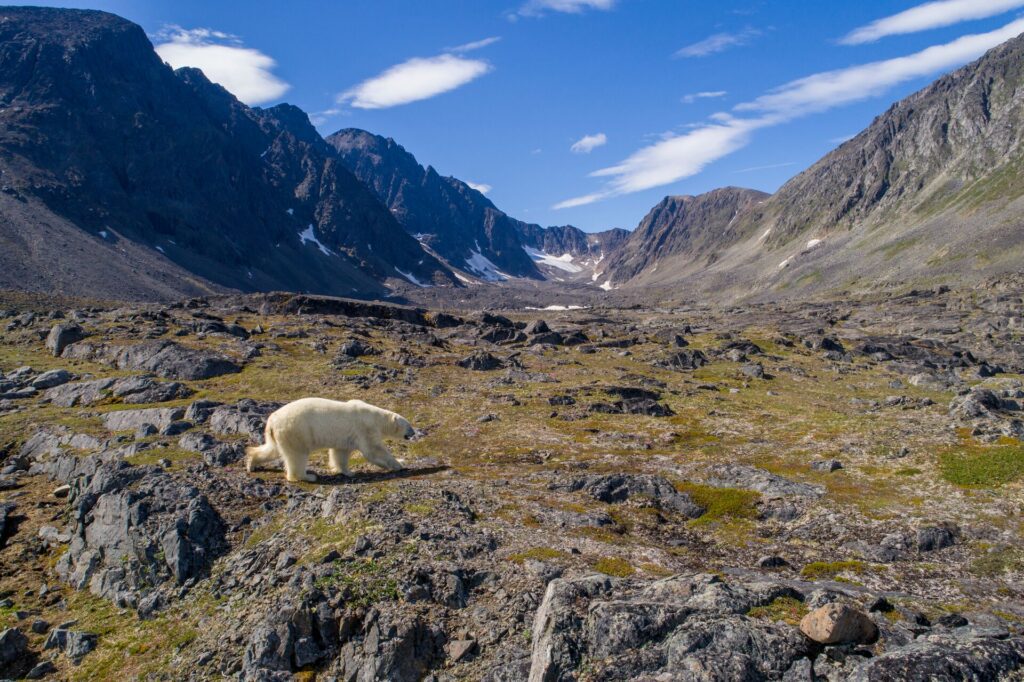

Churchill, Manitoba, Canada – The Polar Bear Capital of the World
On the permafrost banks of Hudson Bay in Canada’s sub-Arctic northwest, Churchill’s reputation for being the Polar Bear Capital of the World is well deserved. Each autumn, hundreds of Western Hudson Bay polar bears gather on the tundra close to town, waiting for the sea ice to form so they can return to hunting seals. Churchill’s also where you’ll find the field base for Polar Bears International – the global authority on polar bear research, conservation and education programs here – along with specialist tundra buggy tours for safe, close encounters with wild bears.
Much of the polar bear viewing takes place in the Churchill Wildlife Management Area and nearby Wapusk National Park, which also protects one of the world’s largest known polar bear denning sites. If you visit in February, you might even see mothers and young cubs emerging from their snowy dens, while later, in summer, you may see them resting alongside the Churchill River estuary during the beluga whale migration, when thousands of these playful marine mammals come close to shore.
Meanwhile the town itself reflects the natural and peopled histories of the tundra. The Itsanitaq Museum showcases Indigenous carvings and artefacts, while the Parks Canada Visitor Centre explores the region’s First Nations cultures – including Cree, Dene, and Inuit – along with Churchill’s history as a Hudson’s Bay Company fur-trading post. There’s even a ‘polar bear jail,’ a holding facility for bears that wander too close to town before they’re returned to the wild.
With easy access and excellent viewing opportunities Churchill offers one of the best places to see polar bears in the wild – if not the very best.
Venture deep into the Churchill Wildlife Management Area and beyond on Adventure World’s 6-day small group Classic Churchill Polar Bear Adventure.
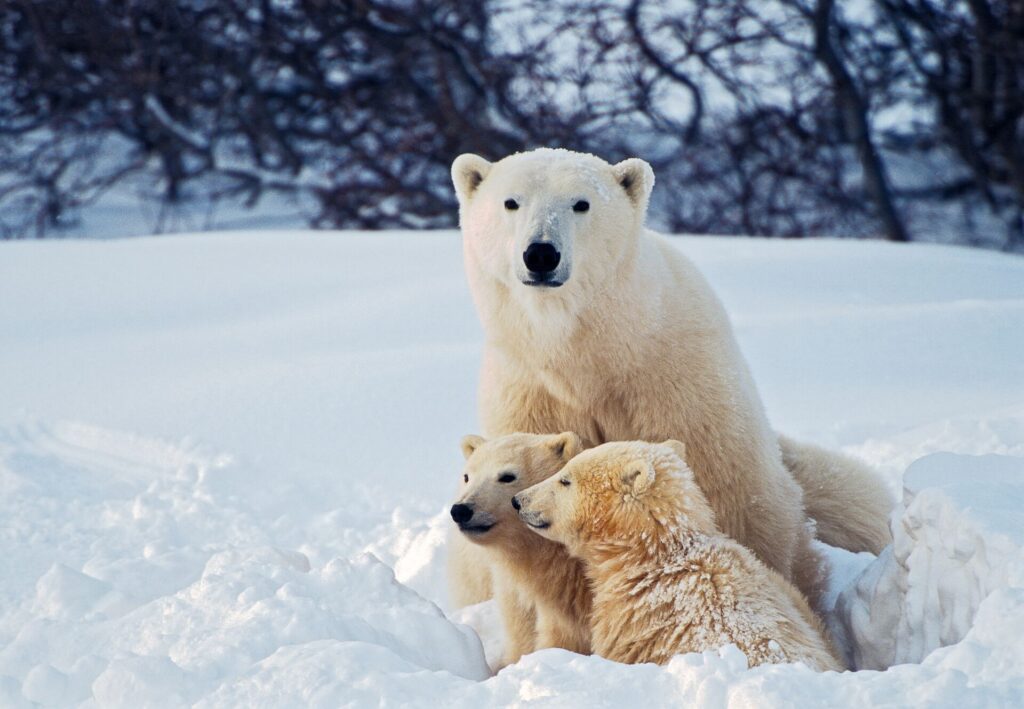

Svalbard, Norway – Arctic Wilderness and Remote Beauty
The Svalbard archipelago is a labyrinth of frosty fjords and sparse tundras, high above the Arctic Circle – and one of the best places to see polar bears in the wild. That’s because they’re relatively abundant in the area – the Svalbard and Barents Sea subpopulation is estimated at around 2,500 to 3,000 bears, and the land and surrounding sea ice sustain them all year round. Breeding, hunting, and denning occur both onshore and on the shifting ice floes – females burrow on land while males roam, often very far out on the pack ice. The prime season for viewing spans late spring through summer, when the midnight sun and receding ice set the scene for expert-led small-ship expedition cruises and Zodiac excursions. To learn more about visiting Svalbard, check out our story, How to Visit Svalbard: A Complete Travel Guide.
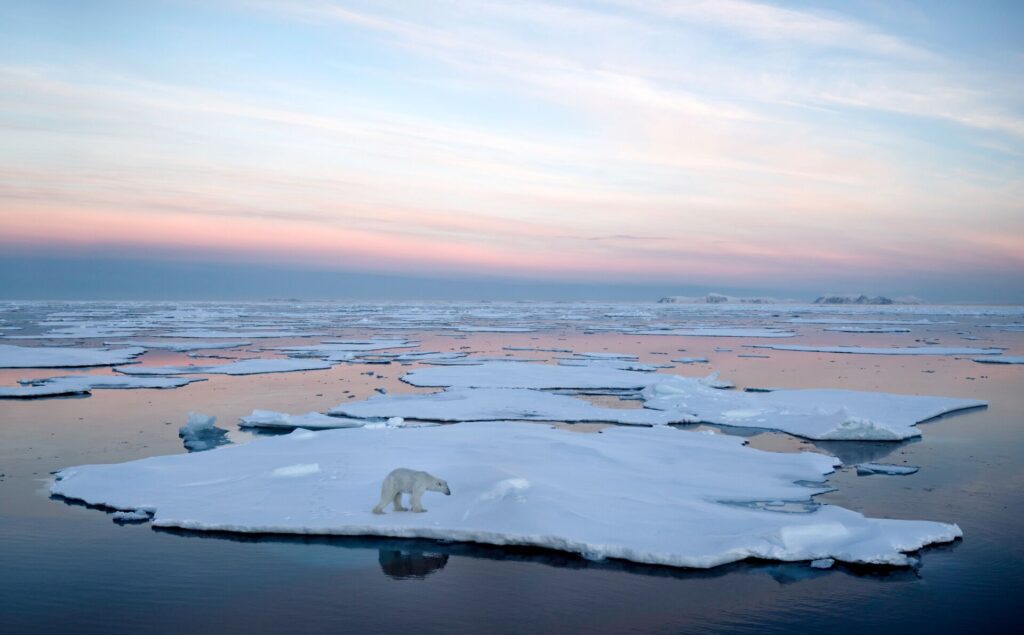

Nunavut, Canada – Remote Encounters and Inuit Culture
Around seven times the size of New Zealand, Nunavut is Canada’s largest and northernmost territory. It’s home to most Canada’s polar bears: of the 19 subpopulations country-wide, 12 fall within or overlap with Nunavut’s boundaries, making it one of their most significant homelands. It’s also here that the Arctic wilderness and rich Inuit heritage converge. The communities here maintain a profound respect for their four-legged neighbour – Nanuq, or Nanook, is held as a powerful spirit, a teacher of strength and survival. Through storytelling, elders pass down their knowledge of polar bear behaviours, hunting practices, and their spiritual meaning, a form of traditional knowledge known as Inuit Qaujimajatuqangit. This area is vast though, and while flights from Toronto connect to hubs like Iqaluit, Rankin Inlet and Arviat – where you can access remote lodges and tundra camps – small-ship expedition cruises through the Northwest Passage often pass through prime zones where bears roam sea-ice edges or coastal drift ice. While you might need to work a little harder to find the bears in this part of the world, the trade-off is a deeper immersion in Inuit culture for a more complete picture of life at Earth’s end.
Explore Marine Conservation Areas and search for whales by ship and Zodiac alongside expert biologists and ecologists on our Into the Northwest Passage itinerary.
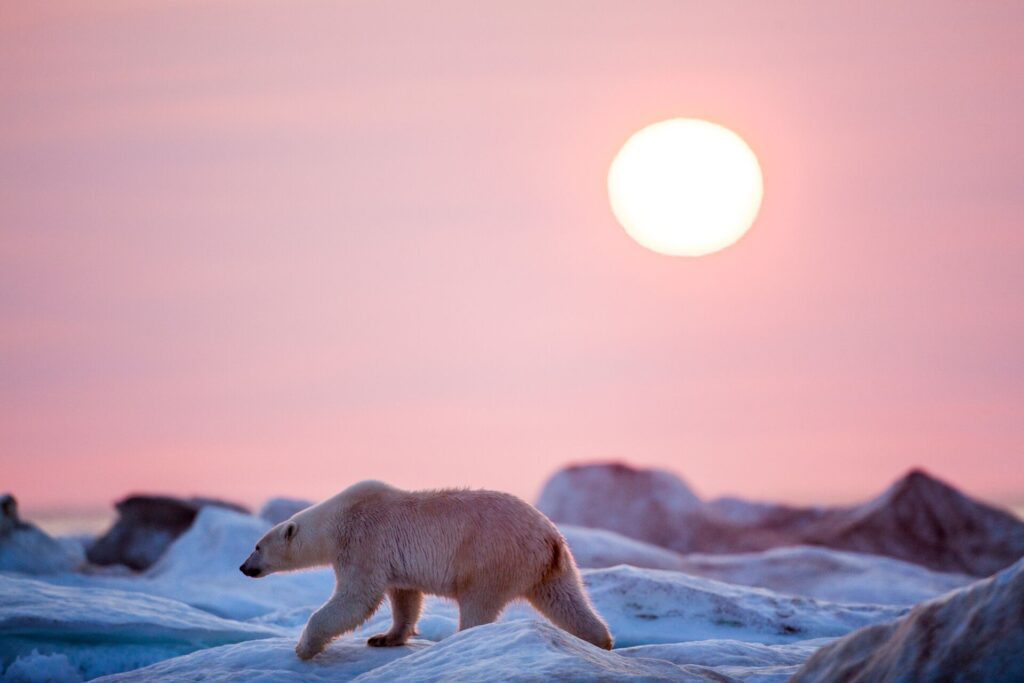

Greenland – Rugged Ice Fields and Untamed Arctic Landscapes
The planet’s largest island supports one of the world’s healthiest polar bear populations: the Barents Sea, Davis Strait, and Baffin Bay subpopulations range into Greenland, with more than 7,000 individual animals moving as the sea ice advances and retreats throughout the year. Bear viewing here is about embracing the remoteness. Greenland spans some 2.1 million km² but is largely untouched, so there are no roadside sightings; instead, most encounters happen on the water or on guided trips with local Inuit operators. The town of Ittoqqortoormiit, on the rugged east coast near the edge of Northeast Greenland National Park, is one of the best fly-in gateways. From here, spring dogsled journeys and summer boat tours venture into prime polar bear territory. On the west coast, settlements like Sisimiut and Ilulissat are better known for humpback whales and icebergs, but you might have some luck on expeditions into Disko Bay and its surrounds. Small-ship expedition cruises offer excellent opportunities for sightings here, too.
Best Time of Year to See Polar Bears
The Arctic’s seasons shape the movements of its most iconic predator. In Churchill, the peak autumn viewing window falls between mid-October and mid-November, when hundreds of Western Hudson Bay polar bears gather along the coast, waiting for the bay to freeze so they can return to the ice and hunt. Summer brings a different experience: in July and August, bears are often seen resting along the shoreline, conserving their energy in a state biologists call ‘walking hibernation’, albeit in fewer numbers than in autumn. February offers rare opportunities to witness mothers and cubs emerging from their dens in Wapusk National Park.
Svalbard’s bears are home all year round, but May to August has the best access via small-ship expedition cruises. Throughout Nunavut, the best time will depend on where you go. Spring (April-May) is prime for guided tours on the sea ice, while summer (July-September) brings sightings along coastal routes and Northwest Passage voyages.
And in Greenland, Ittoqqortoormiit offers spring dogsled adventures (March-May) into prime polar bear habitat before the sea ice breaks up, while small-ship expeditions between July and September offer the best chances of seeing bears amongst the icebergs.
Hoping to see beluga whales and polar bears on the same trip? Experience Churchill’s summer wildlife on our stellar 6-day adventure.
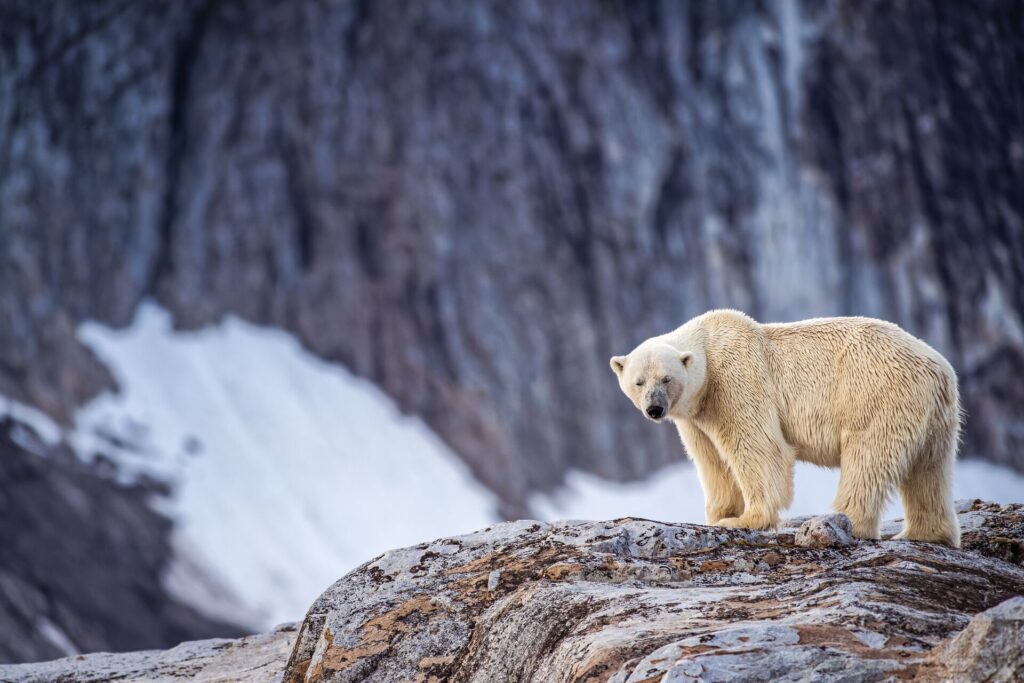

Polar Bear Tours and Guided Expeditions
The best wildlife encounters are as much about who you travel with as where you go. And when you book through trusted partners, you can MAKE TRAVEL MATTER® by ensuring the environments and communities at the frontline of Arctic conservation directly benefit from your visit.
For example, when you visit Churchill on Adventure World’s Polar Bears at Tundra Buggy Lodge journey, you’ll tread lightly on the permafrost by staying in a ‘lodge on wheels’. You’ll also learn more about the region from Polar Bears International’s researchers and see bears living wild and free – all from the comfort of a purpose-built bear-watching buggy.
Prefer a cruise? If you embark on a small-ship expedition voyage in Nunavut, Svalbard or Greenland with an operator that’s a member of the Arctic Expedition Cruise Operators organisation (AECO) – like National Geographic-Lindblad Expeditions, Adventure Canada or Hurtigruten – you can rest assured your journey upholds their strict ethical and environmental guidelines. It also means travelling with an expert expedition team whose knowledge of polar bear behaviour, Arctic ecosystems, and safe operating practices keeps both wildlife and travellers well-protected.
Responsible Wildlife Viewing: Safety and Ethics
While it’s natural to get excited by unique souvenirs and potential photo opportunities, the bears’ protection (and your own) always comes first. In some remote communities, you could see jewellery or carvings made with claws, fur, or other bear parts – these may be part of traditional Inuit culture and trade, but for both legal and ethical reasons you should always appreciate them as cultural artefacts, rather than buy them. Instead, direct your dollars to other handicrafts that reflect Inuit creative traditions, such as tapestries, hand-knitted clothing and paintings.
Ethics aside, the polar bear deserves our respect for being an apex predator at home in its natural habitat. So, always bear in mind that they can move almost silently and hit speeds of up to 40km/h over short distances on land. The golden rule is to never wander off alone – always stick with your guides, because they’re trained in bear behaviour and carry deterrents (including firearms) for extreme emergencies. Follow their instructions to the letter and they won’t have to use them.
At sea, AECO-member expedition cruise lines adhere to strict rules on distances: they must stay 300m away from bears on land. If a bear is in the water, the vessel must stay 500m away: swimming expends far more energy than walking on ice, and prolonged disturbance can be life-threatening. By respecting these rules, you’ll not only stay safe, but you’ll also do your part to ensure these beautiful animals remain undisturbed in the habitat they depend on.
Our 10-day Arctic Safari journey features guided tundra hikes to view polar bears up close and personal.
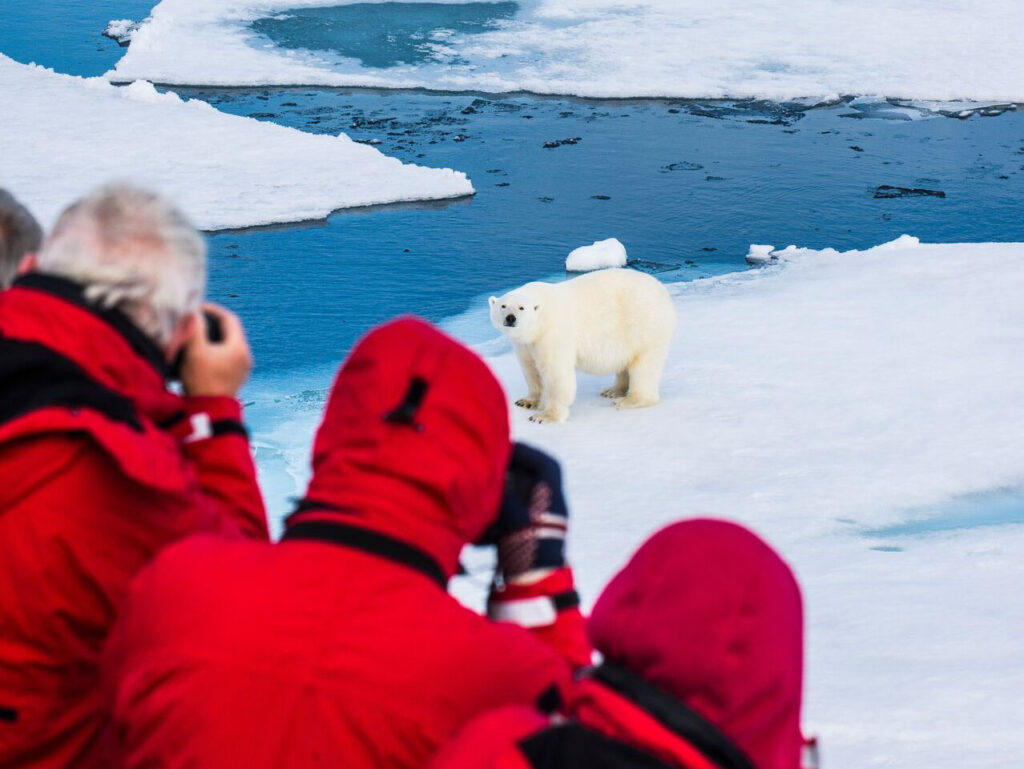

What to Pack for a Polar Bear Viewing Trip
Whether you’re heading to Churchill in autumn, cruising Svalbard or Nunavut in summer, or venturing into Greenland’s spring snowfields, dressing for polar conditions means layering up. Churchill’s autumn season can bring daytime highs of around -7°C and lows of -20°C, while July and August average between 8°C and 16°C. Elsewhere in the Arctic, temperatures will differ slightly, depending on your where and when – but your layered approach will be the same.
Start with a merino or technical synthetic thermal base layer to wick moisture away from your skin. Add an insulating mid-layer, like fleece or ethical down (or both if it’s really cold), and finish with a breathable, waterproof, windproof shell. Go for insulated boots with grippy soles, and accessorise with insulated gloves, a windproof beanie, neck gaiter, and polarised sunglasses. It’s also worth packing rechargeable hand warmers, lip balm, sunscreen, and a weatherproof daypack – just don’t be tempted to carry any food in it when you’re out in the field, because even sealed snacks can attract bears. Learn more about exactly what to pack for the Arctic in our complete guide.
Final Tips for Seeing Polar Bears in the Wild
Get inspired before you go.
Attenborough docos such as Frozen Planet and Seven Worlds One Planet bring the bears’ realm to life, while Unikkaaqtuat: An Introduction to Inuit Myths and Legends by Neil Christopher is an excellent introduction to Inuit culture and storytelling.
Bring extra camera batteries.
Cold temperatures will quickly zap their power, so carry spares and keep them close to your body. Similarly, keep your phone in an inside mid-layer pocket, as your body heat will help preserve its battery life.
Stay mindful.
During a bear sighting, speak softly, move deliberately, and always keep a respectful distance to ensure the encounter lasts.
And, above all, be patient.
Even with expert guides and the best planning, bears don’t appear on demand. Your best bet is to go into the Arctic environment and view that as a reward in itself – you’ll gain a deeper appreciation of the land and seas, of nature at its rawest. Anything else that happens is a bonus.
